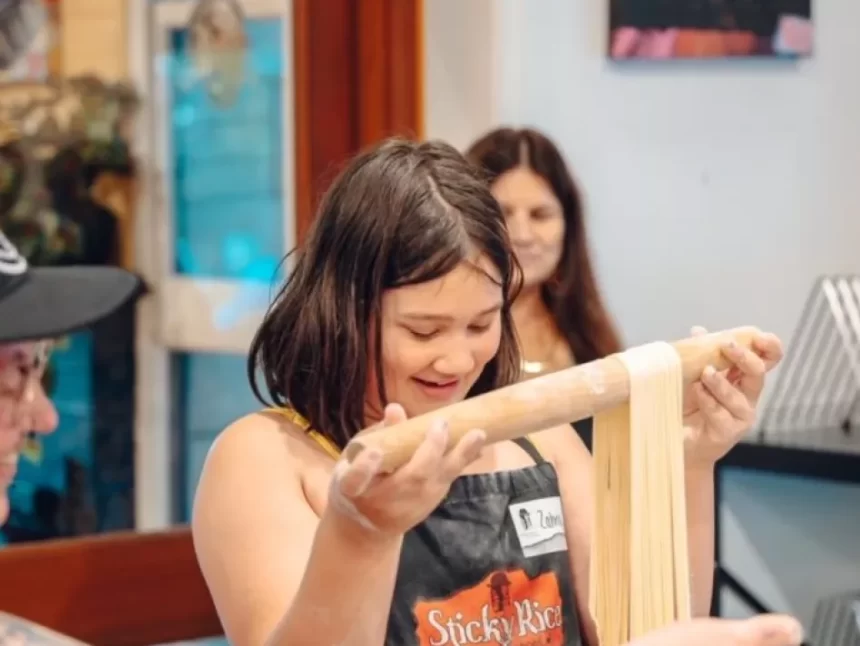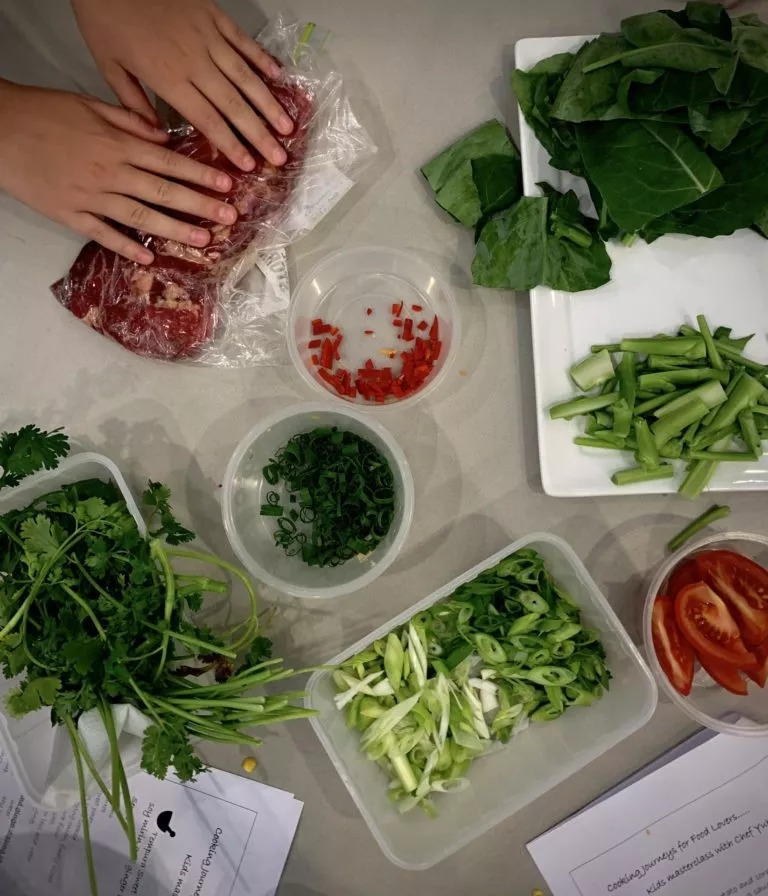Teaching children how to cook is a life skill that might not always lead to a professional pathway but will always support them in whatever career they do pursue, by enabling them to prepare tasty, nutritious, home-cooked meals that sustain them through the busiest working week.
At Sticky Rice Cooking School in South Australia’s Adelaide Hills region – less than 20 kilometres from the Adelaide CBD – business founder Claire Fuller believes that, when it comes to getting primary school kids in the kitchen, it’s about showing them that “cooking is approachable and is something that they can do without it being overly complicated or overwhelming”.
“We give them guided instruction, step-by-step so that they can see the process broken down into manageable tasks,” she told EducationDaily. “At the end, they are so impressed with themselves – which gives them the confidence to do it again.”
Practical cooking skills should begin in primary school
Primary-aged children can participate through their school, or via one of Sticky Rice’s school holiday programs, with the experienced chef instructors helping ensure the key culinary skills are covered.
“From understanding recipe terms, discovering new foods and ingredients, working with a broad range of proteins and vegetables, prepping the raw ingredients, managing the stove and oven cooking techniques, plus presentation of the dish and balancing of flavours,” she says. “Most importantly, they get to eat and enjoy the food and try new things.”
Tailored menus help educators integrate curriculum components
Classes need a 10-student minimum to go ahead, she says, with the cooking school able to accommodate up to 30 students in one class. They include a sit-down lunch and are typically offered between 10am-2pm to enable for easy travel time within school hours. Accompanying teachers attend for free.
By offering a choice of menus when students book, Sticky Rice Cooking School staff can tailor the dishes to cater for food allergies, or a specific focus that can ensure the dishes cooked align with relevant classroom studies. This can suit schools seeking to boost their students’ kitchen garden cooking knowledge, support language lessons, or can enhance history or geography projects by inviting students to gain a practical understanding of the links between food and culture.
“Our classes act as a team bonding activity that breaks down personal barriers and promotes healthy camaraderie within the group,” Ms Fuller told EducationDaily.
Kitchen skills prepare young people to be independent
The problem with not teaching younger children how to cook and how to prepare different raw ingredients is that there are less opportunities to learn in their teen and early 20s.
“Mum and Dad have stopped trying, and there are very few programs that cater to home cooking for this age group, so when they are ready to leave home, they usually have no further opportunities to do some hands-on learning,” she says. “If they don’t already have the confidence to try to cook then they can watch as many Instagram and You tube videos as they like but they may not have the inclination or basic cooking techniques to try for themselves and get some encouraging results.”
With a kitchen disaster behind them, she says, the reality is that young people are likely to label themselves as a ‘non-cook’ – and “from that point on are deprived of nutrition, money and enjoyment for the rest of their lives!”
Healthy nutrition gives growing bodies the fuel they need
Understanding what equates to good nutrition is an essential ingredient in food education for both primary and secondary school kids and Ms Fuller says the aim to create a solid foundation by offering balanced menus which manifest into a healthy meal that incorporates all the food groups, with fresh vegetables, proteins, carbohydrates and fibre all playing significant roles in the meals that are made.
Read more: Can better education stop teenagers being junk food junkies?
“We are teaching cooking of real foods – so nutrition is easily taken care of when you don’t use and buy highly processed food,” she told EducationDaily. “When they are adding small amounts of seasoning to their dishes, such as salt, fats and sugar, they can see the measurements, see the inclusions and see what they are eating, as they create the recipes.”
This, she says, encourages them to be mindful of what is going into their bodies.
“Most kids wouldn’t have a clue what ingredients and quantities of chemicals, fats, salt and sugar are in packaged foods. The key nutritional lesson we can teach kids is that real food should not be intimidating and is always the best choice. Keep it varied, eat a wide choice of food groups and food items and eat sugar and salt in moderation. It’s pretty simple.”

Integration into primary school subjects:
- Mathematics:
Measurement and conversions during recipe preparation
Understanding fractions and ratios in ingredient proportions - English:
Reading and comprehending recipes
Writing and documenting cooking experiences - Science:
Exploring chemical reactions during cooking
Studying nutritional aspects of different ingredients - Cultural studies:
Exploring cultural significance and history of various cuisines
Integration into high school subjects:
- Home economics:
Advanced cooking techniques and meal planning
Understanding nutrition and food safety - Language and cultural studies:
Exploring culinary vocabulary and language use
Culinary cultural exchange - International studies:
Global perspectives on food
Culinary diplomacy
For secondary students, Ms Fuller says “we can get more hands-on around specific skills, such as handling whole fish, chicken, meat cuts, deboning, stuffing, etc”.
“We can offer language and cultural studies great insights into the ingredients, context, recipes and cooking background of international cuisines,” she told EducationDaily, adding that they specialise in all Asian classes, including Japanese, Indonesian, Thai and Malaysian – “and can teach classes in spoken Japanese as an additional challenge for Japanese students.”
With workshop classes in cheese making, dumpling making and pasta making, the school also caters for technical interests that can help a student pursue a pathway of personal or professional passion.
Summer holiday food adventures
During these long summer school holidays, when families often look for interesting ways to fill long, lazy days, Ms Fuller believes helping kids learn to cook can be just as fun as it is educational.
“It’s a life skill that as parents we should be responsible for,” she told EducationDaily. “If we can’t cook and teach them ourselves, then making sure our kids get tuition elsewhere is a priority before they leave school/home.”
And with parent and child classes also available, cooking can also become a memorable time to bond and learn together.
“Spending time with your kids in the kitchen should be a priority.”








